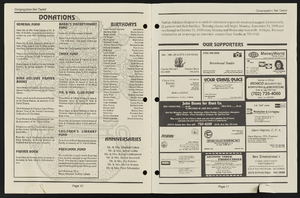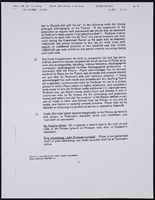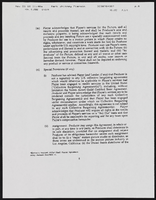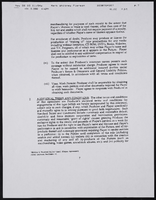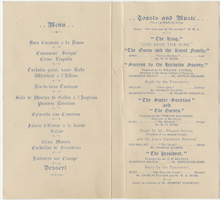Search the Special Collections and Archives Portal
Search Results
Josiah Edward Spurr Papers
Identifier
MS-00078
Abstract
Collection consists of an original manuscript, "Geology and Ore-Deposition at Tonopah, Nevada" by Josiah Edward Spurr (1870-1950) with hand-drawn diagrams, and letters discussing the donation of the manuscript. The manuscript, which was published in the journal Economic Geology in 1915, is a geological description of the Tonopah mining area; the Tonopah Mining Company is mentioned frequently. It is undated, but the publication date suggests it was written approximately 1913-1915.
Archival Collection
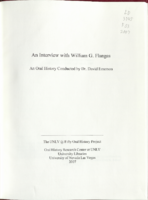
Transcript of interview with William G. Flangas by Dr. David Emerson, September 27, 2006
Date
2006-09-27
Archival Collection
Description
William Flangas was born in Ely, Nevada, in 1927. He attended grade school through high school in White Pine County. In his junior year, he left school to join the Navy. After the war, he enrolled at UNR on the G.I. Bill, and graduated with a degree in metallurgical engineering. In 1951, Bill worked for Kennecott in a 'deep root' project, spent a summer in Chile working in a smelter, and then went back to work for Kennecott in underground operations. On the basis of this experience, he wrote a thesis and earned an EM degree (Engineer of Mines). Bill was approached in 1958 by Mr. Reynolds of the Reynolds Electric/Engineering Company with a request that he come help them out at the Nevada Test Site. He refused at first, but after a second call and a visit to the tunnel site, he accepted the job, pulled together a first-rate group of experienced miners, and stayed on to enjoy a 40 year career concurrent with the job at the test site, Bill was appointed to the State Planning Board, later renamed the State Public Works Board. The function of the board was to list public buildings in order of priority. In 1984, the College of Engineering at UNLV made the priority list. Bill helped set up three point contact among the university personnel, the architectural firm, and the Public Works Board. This was to ensure that the building met the needs of the engineers but did not go over budget.
Text
Pagination
Refine my results
Content Type
Creator or Contributor
Subject
Archival Collection
Digital Project
Resource Type
Year
Material Type
Place
Language
Records Classification

